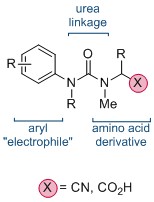Chinese chemists report that, in the absence of sunlight, bioluminescence can drive photosynthesis.
Photosynthesis uses energy from light to convert carbon dioxide and water into oxygen and carbohydrates. Although light emitting diodes (LEDs) and fluorescent lamps have been tested as alternative light sources to natural sunlight, bioluminescence has received much less attention. Advantages of bioluminescence include no heat radiation, high energy conversion efficiencies and no electrical requirements.
When luminol is oxidised to its dianion form, by hydrogen peroxide and the enzyme horseradish peroxidase, it produces blue luminescence. In general, plants grown under blue light photosynthesise faster than plants grown under red or green light. Armed with this knowledge, Shu Wang and his team at the Chinese Academy of Sciences in Beijing have shown that blue luminescence generated from luminol can initiate photosynthesis in geranium leaves.

Blue luminescence, emitted when luminol is oxidised by hydrogen peroxide and horseradish peroxidase, can drive photosynthesis
Read the full article in Chemistry World»
Read the original journal article in ChemComm:
Bioluminescence as a light source for photosynthesis
Huanxiang Yuan, Libing Liu, Fengting Lv and Shu Wang
Chem. Commun., 2013,49, 10685-10687, DOI: 10.1039/C3CC45264F
















